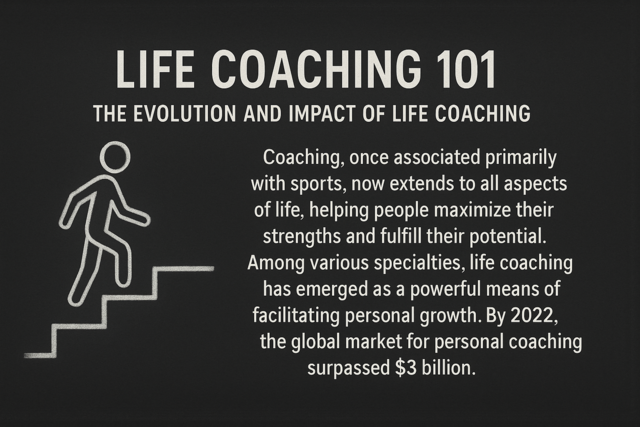No matter what you are doing in your life - whether it is on a professional level or as a volunteer and whether you are a parent, a teacher, a doctor, a business owner, a politician or any combination of these titles - you are selling something.
In fact, for most people, a day does not go by that you are not selling something to somebody. Money may not always be changing hands, that's true, but when you are trying to convince someone to change a point of view and to come around to your way of thinking, you are selling.
Let's look at a few examples. As a parent, you could be selling the idea of an early bedtime to your child when you yourself are tired. As a student, you may be selling your teacher on why you need more time to take a test. As a neighbor, you may be selling your community the idea that a stop sign is needed at your street corner. As a business owner, you may be selling your new product to a potential investor. As a fundraiser, you may be selling tickets for a charity dinner/auction.
The task of selling and the art of persuading are closely aligned. In his book, Three Steps to Yes: The Gentle Art of Getting Your Way, Gene Bedell asserts that the ability to sell your ideas, your services and even yourself can impact your life in a way little else can. He says that good salesmanship can make the difference between being in line for a job promotion and being in the unemployment line.
The trouble is that many of us equate selling something with being pushy or maybe even with being obnoxious. We think of a salesman as someone working in a used car lot who tries to get you to buy one of his lemons or as a door-to-door magazine peddler who has no intention of ever entering your subscription.
It's time to reimagine the art of salesmanship, and, yes, it is an art. More importantly, it is a skill you can learn and develop. There are five basic strategies to selling anything - goods, services and ideas -- and when you have mastered them, you will find you will have radically changed your life for the better.
Let's examine five techniques to get someone to say "yes" to whatever you are offering.
1. Know your customer.
Effective public speakers take the time to know their audience. Often they will find out key details about the people in the room such as where they are from, their age range and their educational level. Why? They want to tailor their speech to the specific needs of their listeners.
A good salesperson must do the same thing. Before you make that appointment or attend that crucial meeting, find out what you can about the company or the person to whom you are targeting your product or service. The Internet is a great place to start. Check out social media sites such as LinkedIn and Facebook and visit any pertinent websites and blogs. Pay attention to customer feedback the company has received.
Dig for specific information on how your goods or services can benefit the company. Be sure to find out if they have something similar in place, and, if they do, be prepared to discuss why your service is better or at least better for them.
Find out all you can about your market. Regardless of how great your product is, no one will know about it, if you do not target the right people. An important part of your research should be determining the correct person or team to contact and how best to reach those individuals. In today's world of super-fast communication, don't let your email or phone call be lost in the shuffle because it wasn't targeted correctly.
Conduct your own market research to find out how effective your product or service is. Use that data to attract new customers. Despite all the wealth of technology we have at our fingertips, the best marketing tool is often positive feedback and good word-of-mouth. Invite your customers to tell you what they think of your service. Use that positive feedback to attract new customers who have some of the same needs.
No one likes to have his or her time wasted. The more personal you can make your sales message, the better it will be received. Put yourself in your customer's position and ask yourself what you would want to know about your service. Most people want to learn of things that will make their lives easier or better in some way. How can you meet their specific needs?
2. Don't make a pitch; have a conversation.
The reason many people have a negative connotation of selling is because they think of so-called "hard" selling practices that involve an almost scripted sales pitch filled with exclamations and false promises. To get your customers to say, yes, focus on a conversation, not a pitch.
Often a salesperson will walk away from a lost sale, not understanding what went wrong. "I said everything I wanted to say," he might moan. "The client just wasn't listening." The problem with this scenario - and the resulting lost business agreement - is in who should be listening to whom. Aim to listen more than you talk and you will become a more effective communicator.
Sound counter-intuitive? How can you find out your client's needs if you are doing all the talking? How can you get to know what has worked and not worked for a company in the past if you do not listen? How can you establish a rapport and a common sense of understanding if you do let the other person explain his or her service needs?
Let's face it. We all like to talk about ourselves. We all have egos. That's why, if you can turn the tables by asking open-ended questions that get your customers talking about themselves, you will have opened a very important door to winning the sale.
Think about your first major purchase? Let's say it was a car. It's a scary thing buying a new car, and worrying about all the add-on taxes, title and interest charges. It's easy to panic and think you can't take the plunge. What if instead of worrying about how much commission he was going to make, the car salesperson just looked at you as a person and asked you questions such as "Is this your first car?" or "What are the things you want in a great car?" or "Who will usually be driving with you?"
These types of questions will trigger a conversation. By listening to your responses and asking some appropriate follow-up questions, the salesperson will get to know you as a person, not just as a dollar sign. In return, you will feel more comfortable, more focused on the good things about buying a new car and less focused on payments.
Now this does not mean that you can ignore the price parameters a customer has set. Part of listening to your customers is respecting what he or she has told you about budget constraints. Let's say your client needs a well-made, versatile business suit for an upcoming interview but has a limited budget. If you ignore the budget and only offer high-priced suits, you will lose the sale.
Resist the urge to tell your customers what they need. By carefully crafting a series of questions, you will instead enable your customers to tell you what they need. Try to think of yourself as a problem solver. The problem in this scenario is is how to sell this client the best quality suit he or she can afford. By having a conversation, you can give the customer options to make the best decision, which may include buying a better quality suit at a higher price because it will last longer and therefore save more money in the long run.
As a salesperson, don't compete solely on price. Many a company has succeeded without being competitively priced. Concentrate on need and value, and more importantly, aim to give your customers what they need to have a good experience with your goods or service. Nike or Apple customers do not choose products because they are the lowest-priced on the market, for example. They choose them because they feel they deliver the experience they want.
If you watch videos of Steve Jobs talking at past Apple product launches, you will realize he stressed customer experience over technology. At the iPhone launch, for example, he doesn't talk much about the speed of the iPhone's processor or its screen resolution. He does emphasize, however, how easy it is to carry one device as both your music player and your phone. He also discusses the way the device looks, realizing that his customers appreciate the simple, sleek style of Apple products.
Remember your customers also care about how your service or product is going to fit into their lives.
3. Know your product.
It's hard to get someone excited about what you are selling if you are not excited about it yourself. Know your product or service inside out and backwards and forwards before you make a sales call. Anticipate questions and be ready with concrete, meaningful answers.
In addition to any pertinent facts and figures, share examples of how your service has helped other people and companies like theirs. The secret is to talk about your product or your service in a way that draws in clients so that they want to be part of what you offer. A good way to achieve this is through the power of storytelling.
Share real life examples of how what you are selling has changed people's lives. Maybe the story of how your company started is inspirational. An example of powerful business storytelling is the founding of TOMS shoes. In his book, Start Something That Matters, Blake Mycoskie explains how a trip to Argentina in 2006 gave him the idea for a business model of helping a person in need with every product purchased. While he started with shoes, Mycoskie's "One for One" program has branched out into eyewear and, most recently, coffee.
People like to hear about personal stories, even if you are selling something that would seem impersonal. "Before and after" stories can be powerful sales tools. Link data with emotion whenever you can. Talk about how using your product makes lives less stressful, more fun or more meaningful. It's hard to say "no" to something inspirational.
"Ninety-five percent of what's sold in the world isn't an end unto itself, it's a means to an end," writes Bill Stinnett, author of Think Like Your Customer. "Nobody wants to buy computers; what they want is the ability to transfer information more quickly and accurately so groups can work together better, so they can put products out to market faster, so they can capture more market share. What does the client want to achieve? When you ask that question, it changes everything."
A key part of knowing your product is to know your competition. Your goal is not to bash your competition but to use what they do to fuel your own success. When asked about his competitors, Bill Gates once said that competition from Google, Apple or even free software helps keep Microsoft on its toes. How can you learn more about what your competitors are up to? Here are a few ideas:
- Shop their services as a customer
- Visit their website and online profiles
- Read and listen to their customers' feedback
- Analyze their advertising and marketing plans
Then use this information to fuel any needed changes in your sales plans and your approach with potential clients.
4. Be prepared for the unexpected.
One of the reasons Global Positioning Systems (GPS) have become a problem for drivers rather than a help is because they are not programmed to deal with the unexpected. A GPS may not be programmed for the latest road work delays or for a resulting detour. A GPS does not take into consideration the impact of weather on the time it takes to get somewhere or the safety of the road under extreme circumstances.
Even if you have GPS, it's wise to check a current map and current road conditions before your trip so that you will successfully get to your destination. It is the same with sales. Effective salespeople are confident in their ability to make the sale, but they are humble enough to know that they need to have a back-up plan.
Selling is the practical application of psychology in a business context, according to Brian Tracy, author of The Psychology of Selling. All salespeople encounter objections. Tracy advises that an effective seller interprets objections as questions. Here's an example: If a client says, "The cost of this not is in my budget." Think of it as the question, "How can I afford this?"
If a customer says, "I don't see the use of this product for our firm." Think, "Would you explain to me how this product will help my firm?" In other words, you can offer counters to objections by offering clear, concise information in response. "Obstacles are necessary for success because in selling, as in all careers of importance, victory comes only after many struggles and countless defeats," writes Og Mandino in his book The Greatest Salesman in the World.
A common roadblock to a sale is the potential customer saying, "I am not the person who has the authority to make this decision." Once again, preparation and a little bit of psychology can get you over this hurdle. Instead of letting this statement back you into a corner, think of it as an opportunity.
Ask the individual who is the best person to contact and if you can count on his or her recommendation for the decision. If the response is ambiguous or negative, use it as an opportunity to offer more information that will be of value to the client.
5. Follow up.
Critical sales can be lost when the salesperson neglects to follow up after the initial sales call. If you left a meeting without a firm commitment, all is not lost. You can make yourself stand out by sending a thank you note for the appointment. Did your customer ask for more information? Send it to them. Did someone help you get that appointment in the first place? Thank that individual as well.
In his book Purple Cow: Transform Your Business by Being Remarkable, successful entrepreneur and author Seth Godin says you can transform your business by separating yourself from the ordinary. He says that if what you are selling is not remarkable in some way "then it's invisible -- no matter how much you spend on well-crafted advertising."
With this philosophy in mind, don't just sit there hoping for the sale. Do something original to make it happen. When you communicate your product or ideas effectively, you will persuade others to think as you do. The best way to sell something is to give enough information so that the product or service sells itself or, more accurately, that the customer talks himself into buying it. As Godin says, "People don't believe what you tell them. They rarely believe what you show them. They often believe what their friends tell them. They always believe what they tell themselves."
The phrase "Always be closing" may have a negative connotation from Alec Baldwin's character in David Mamet's searing Glengarry Glen Ross movie, but it makes sense when used in a gentler way. By simply ending a conversation with comments like "When can we get started?" or "Shall I send you the paperwork to review?" or "May I present this idea at your next board meeting?" you can get your sale out of neutral and into motion.
''Everyone lives by selling something." Author Robert Louis Stevenson, best known for his novel Treasure Island, wrote in his 1892 travel memoir Across the Plains, but that statement is still true today. No matter what business you are in, you most likely devote a large portion of your time to promoting something or someone.
The ability to persuade others to give you what they have for what you have is part of who we are as human beings, according to Daniel H. Pink in his book To Sell Is Human. He says that salesmanship has raised our standard of living and has improved our lives on a daily basis.
Finally, when you believe in yourself and/or your service and follow these time-tested techniques, you will find that you can influence others. Whatever you are selling, it is important to maintain your ethical standards. Don't try to sell a product or service that is simply not right for a customer or will provide that customer no benefit.
In the end, your satisfied customers will become one of your greatest selling features.

























